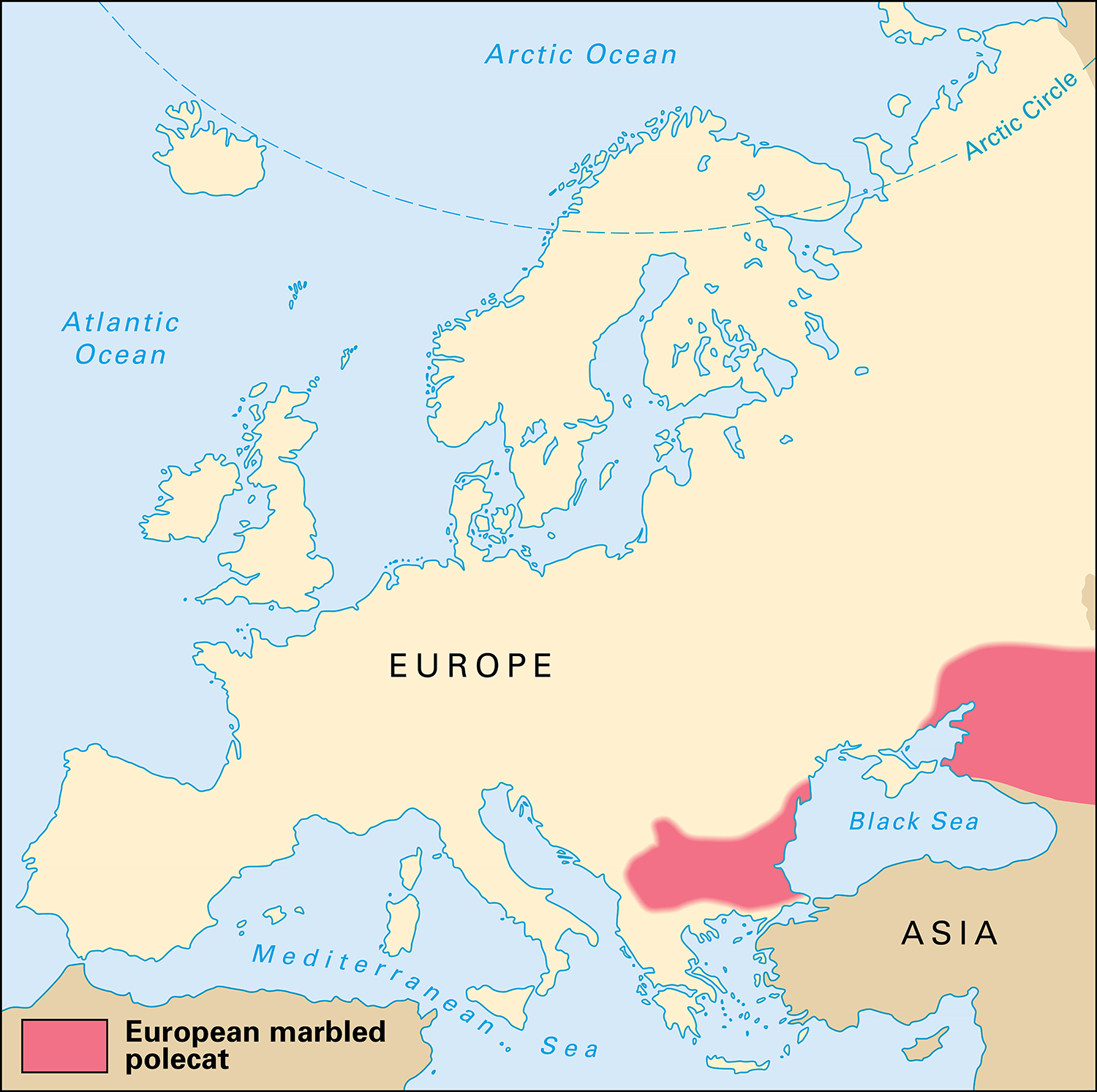Polecat is a small mammal that belongs to the weasel family. There are three species of polecats: (1) the European polecat, found throughout Europe, (2) the steppe polecat, found in the plains of central Asia, and (3) the marbled polecat, found in the dry grasslands of southeastern Europe to western China. The North American skunks are often called polecats because their habits are similar to those of the European polecat.

Polecats prey mainly on mice, rats, and other rodents. They also feed on birds, eggs, rabbits, fish, reptiles, insects, amphibians, and fruit. Polecats are active mostly at night and rely on their sense of smell to locate food. They usually live in an underground burrow, which has a special section to store extra food.
Polecats live alone, except during the mating season or when the female is raising her young. Five to eight young are born about 40 days after mating. They leave their mother after three months. When frightened, polecats discharge a strong-smelling fluid from scent glands under the tail. A polecat also uses this fluid to mark its territory, the area it will defend against intrusion from other polecats.
A polecat has a long, slender body and short legs, which enable it to chase rodents in burrows. All three species have a “mask” of darker hair around their eyes. European polecats have dark outer fur, with lighter colored underfur showing through. Their fur is marketed under the name fitch. Male European polecats are 13 to 18 inches (33 to 46 centimeters) long, not including a tail of 4 to 7 inches (11 to 18 centimeters). As with all polecat species, females are smaller.
Steppe polecats are usually brown or yellowish, with a dark tail and legs. Males measure 14 to 22 inches (35 to 56 centimeters) long, not including a tail of 3 to 7 inches (8 to 18 centimeters). Marbled polecats have a reddish-brown back, with patches of white or yellow. Male marbled polecats are 11 to 15 inches (28 to 38 centimeters) long, with a tail that measures 6 to 9 inches (15 to 22 centimeters).
